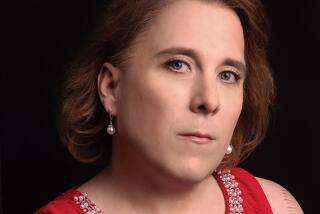Dickinson May Have Had Bipolar Traits
Following a sunny day in the 19th century, Emily Dickinson wrote these lines:
Inebriate of Air--am I--
And Debauchee of Dew--
Reeling--thro endless summer days--
From inns of Molten Blue
*
Scholars have long speculated whether the reclusive poet suffered from some kind of mood disorder. Now, a century later, a study postulates that Dickinson may have had a mild form of manic depression, with periods of high poetic creativity coinciding with exuberant periods that bordered on mania.
The report adds credibility to earlier suggestions that Dickinson, one of America’s most beloved poets, had mood swings that fluctuated with the seasons--many references to despondent winter chills and heady summer intoxications appear throughout her 1,800 poems.
The research also supports the idea of a link between creativity and mood swings among writers and artists, although it is a link that even proponents of the theory make cautiously. Diagnosing the mental conditions of the deceased is highly speculative, and linking genius and madness tends to romanticize mental illness: Madness is certainly not a requirement for creativity, and most people with serious mental illnesses are tormented and dysfunctional, not great artists.
The connection between Dickinson’s moods and her poems has long been a subject of interest but has never before been quantified. In the new research, John F. McDermott, professor emeritus of psychiatry at the University of Hawaii School of Medicine in Honolulu, examined whether there was a seasonal pattern to when Dickinson (1830-1886) wrote her poems.
The analysis suggests that Dickinson’s “creative genius was ignited” in 1862, in the middle of an eight-year period when she wrote most of her work, McDermott said. Generally, during this period, Dickinson was much more prolific during the spring and summer and much less productive in the winter, he found.
“One can speculate she had winter blues or depression, but at the same time, in the spring and summer, she had a flash of creative energy,” McDermott said in a telephone interview. “There was an overriding of that winter lapse. She wrote all day long--she wrote a poem a day. If she saw the chestnut tree in bloom, she would say the sky was in bloom. She had more intensity and enthusiasm about life. She had a change in mood, a cognitive change.”
Extreme fluctuations in mood--bordered by mania, sleeplessness and inexhaustible energy on one end and depression, hopelessness and self-doubt on the other--are associated with bipolar disorder, or manic depression.
“My speculation is she had a bipolar trait,” said McDermott, whose work appears in the May issue of the American Journal of Psychiatry. “There is a spectrum from a bipolar trait to the illness. People at the level of bipolar illness are not creative. They are disorganized, they are psychotic. She had a trait . . . and along with that came a new kind of thinking.”
Previous research by psychiatrist Nancy Andreasen of the University of Iowa and Johns Hopkins psychiatrist Kay Redfield Jamison has indicated that bipolar traits are more likely among artists and writers than in the general population.
Andreasen said the idea of the tormented artist is anything but romantic. “Mood disorders are not trivial illnesses,” she said. “They are associated with a 10% suicide rate. There is also a remarkably high suicide rate among writers.”
Connecting artists with illness is a popular game that goes back centuries. The illnesses have changed depending on the times and the experts. Researchers have speculated that Dickinson, like other famous artists, suffered from seasonal affective disorder, or SAD, characterized by mood changes that vary with the amount of sunlight available.
Much of the mystery and mystique around Dickinson comes from her poems, written in secret. Considered to be far ahead of their time in sophistication, they are powerfully evocative of both exuberance and despondency.
“If there was ever a poet that I would diagnose in all likelihood suffered from SAD, Emily would be our lady,” said Norman Rosenthal, a Georgetown University psychiatrist who pioneered the study of the disorder.
More to Read
Sign up for our Book Club newsletter
Get the latest news, events and more from the Los Angeles Times Book Club, and help us get L.A. reading and talking.
You may occasionally receive promotional content from the Los Angeles Times.






